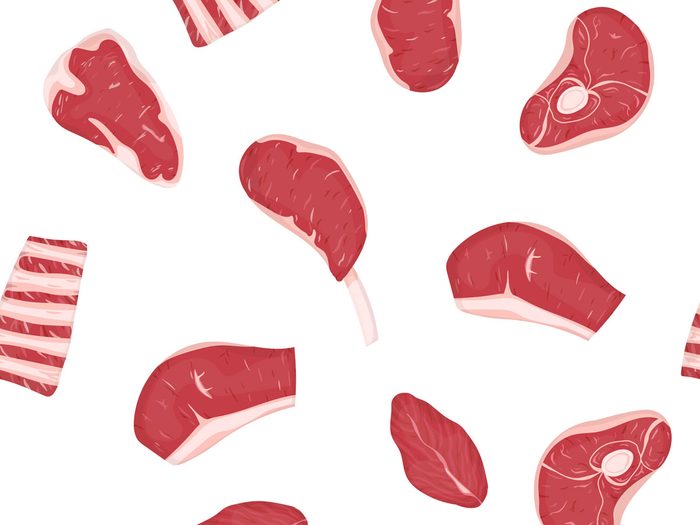
Meat 101
Hamburgers, hot dogs, and chicken fingers are some go-to meat products—but they’re not your best choices when it comes to meat. But you don’t have to cut out all meat to be healthy, according to Kris Sollid, RD, Senior Director, Nutrition Communications at the International Food Information Council Foundation. That protein meat provides is useful: “Meat can be part of a healthy diet just as a healthy diet can be meatless,” he says. “Whether you choose to eat meat or not is up to you.” It’s a key source of vitamins and minerals like B12 and iron. Malina Linkas Malkani, RDN, media spokesperson for the Academy of Nutrition and Dietetics, recommends balance when it comes to servings. Malkani suggests filling a quarter of your plate with meat and the rest with cooked vegetables, whole grains, and other plant-based foods for a balanced meal.
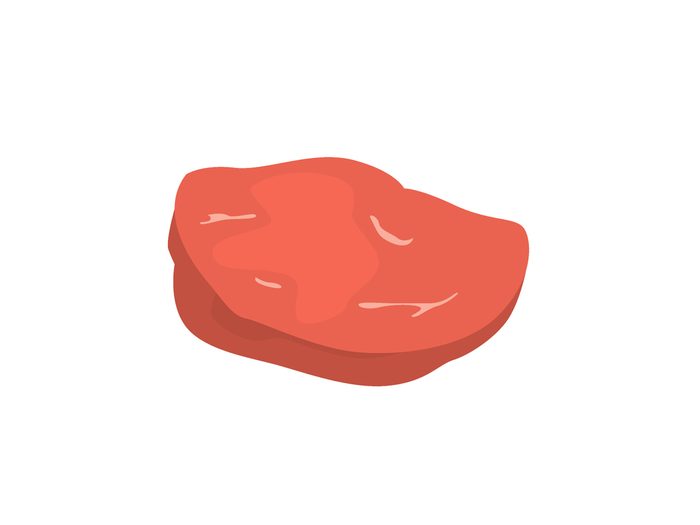
Best overall: Lean cuts of meat
The overwhelming consensus from registered dietitians is to look for lean cuts of meat. Opt for servings that deliver less than 10 grams of total fat, and 4.5 grams or less of saturated fat, which is about 3.5 ounces (think: deck of cards size). Malkani, also the creator of the Wholitarian ™Lifestyle, recommends trimming away any excess fat or skin as well as grilling, boiling, or roasting the meat to reduce the saturated fat content, too. Here’s what can happen when you don’t eat enough protein.

Best: Skinless, light turkey meat
Turkey is one of the leaner proteins that’s also a great source of vitamin B6 and niacin, according to Sollid. These nutrients help support heart health, digestion, energy, brain function, and other bodily processes. While not as lean as other parts, turkey drumsticks and thighs are a good source of iron, too, Sollid says. Iron is key for metabolism and heart health, and not getting enough in your diet could possibly lead to anemia.
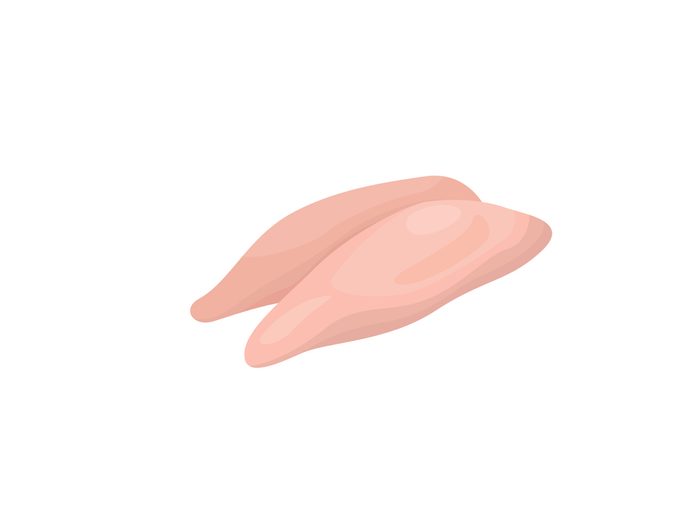
Best: Skinless chicken breast
Poultry is also an excellent source of vitamin B6 and niacin, and that’s just the beginning. Research shows that it plays a positive role in maintaining a healthy weight and overall well-being, according to a study published in the Journal of Food & Nutrition Research. Plus, the white meat is an especially good source of chlorine, phosphorus, and riboflavin, says Sollid. Don’t discount the dark meat benefits, either. According to Sollid, it’s a better source of zinc than the white stuff.
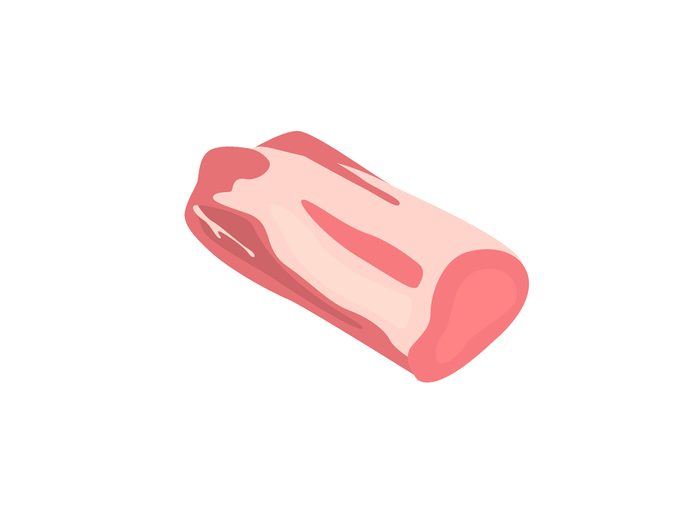
Best: Pork tenderloin, pork loin or roast
Lean cuts of pork tenderloin are a great addition to any meat eater’s diet. Pork is the most consumed meat around the globe: The Food and Agriculture Organization of the United Nations says that it accounts for more than 36 percent of the world’s meat intake. You’ll get tons of nutrients, including thiamin, vitamin B6, potassium, riboflavin, and more, says Sollid.
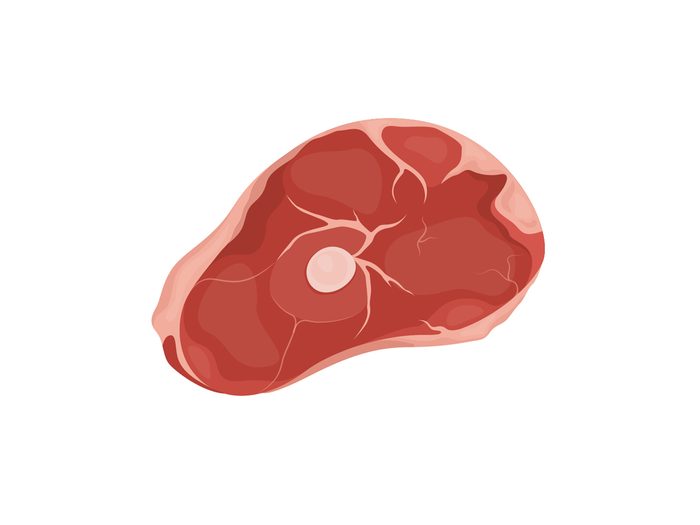
Best: Flank, strip steak and 95 percent lean ground beef
Red meat gets a bad rap, but lean cuts of red meat can be part of a healthy diet. Much like other meats, beef is a great source of protein and essential nutrients. If possible, opt for grass-fed beef to take in more vitamin E and antioxidants. Also, make sure to avoid burning or charring any beef—any meat for that matter: Research indicates that the burnt stuff may boost the risk for some cancers. (Psst: This is the one ingredient you should never barbecue meat or fish without.)

Avoid: Processed meats
Cured meats, cold cuts, salami, and hot dogs are just a few examples of processed meats to limit or avoid. Scientific consensus confirms that eating large amounts of these processed meats will raise your risk of colon cancer. These meats are often high in both sodium and saturated fats, Malkani says. High sodium intake, including that in processed meats, is associated with mortality from heart disease, stroke, and type 2 diabetes.
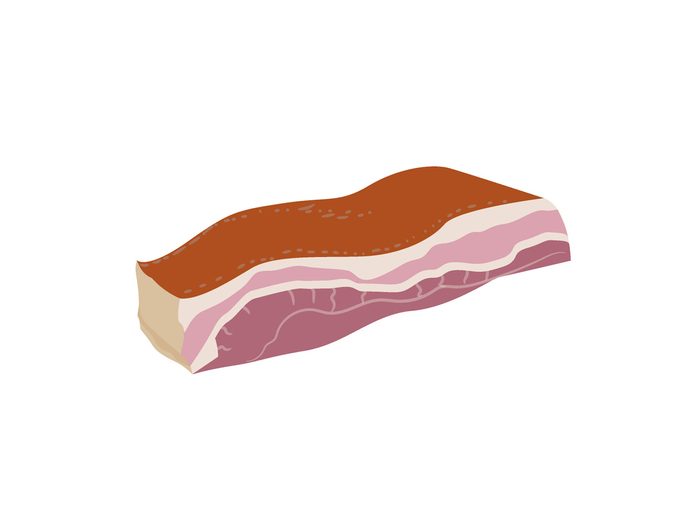
Avoid: Fattier cuts of meat
You’ll want to keep fattier cuts of meat off your plate: Their high load of saturated fats may raise your cholesterol levels and contribute to heart disease, according to the American Heart Association. Which cuts are worrisome? Think rib-eye steak, T-bone steak, and New York strip steak, for starters. In the pork family, ribs and bacon; with poultry, drumsticks and the skin tend to be the fattiest. Although limiting these cuts of meat is good for your diet, you can enjoy them in moderation, according to Sollid.
Medically reviewed by Samantha Cassetty, MS, RD.
Now that you’re all caught up on the best meats to eat, next learn how long chicken lasts in the fridge.
